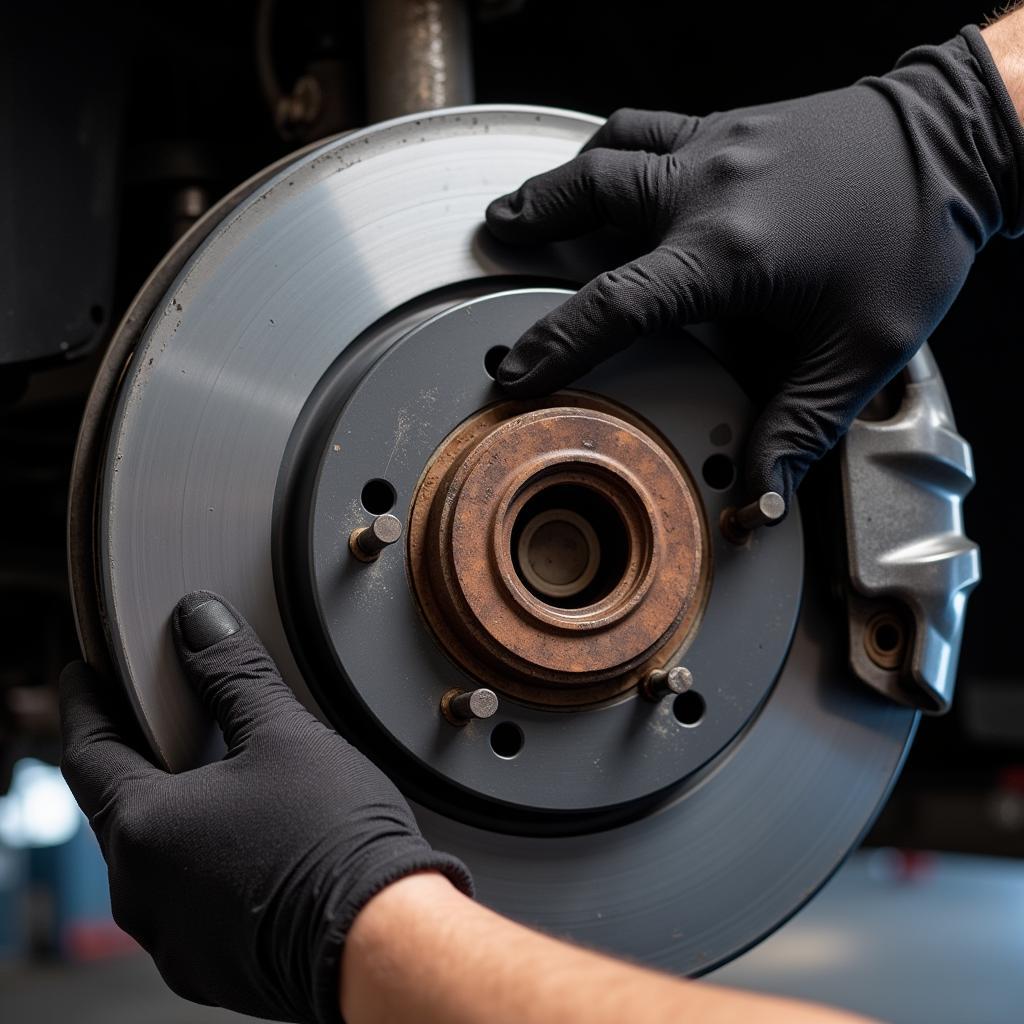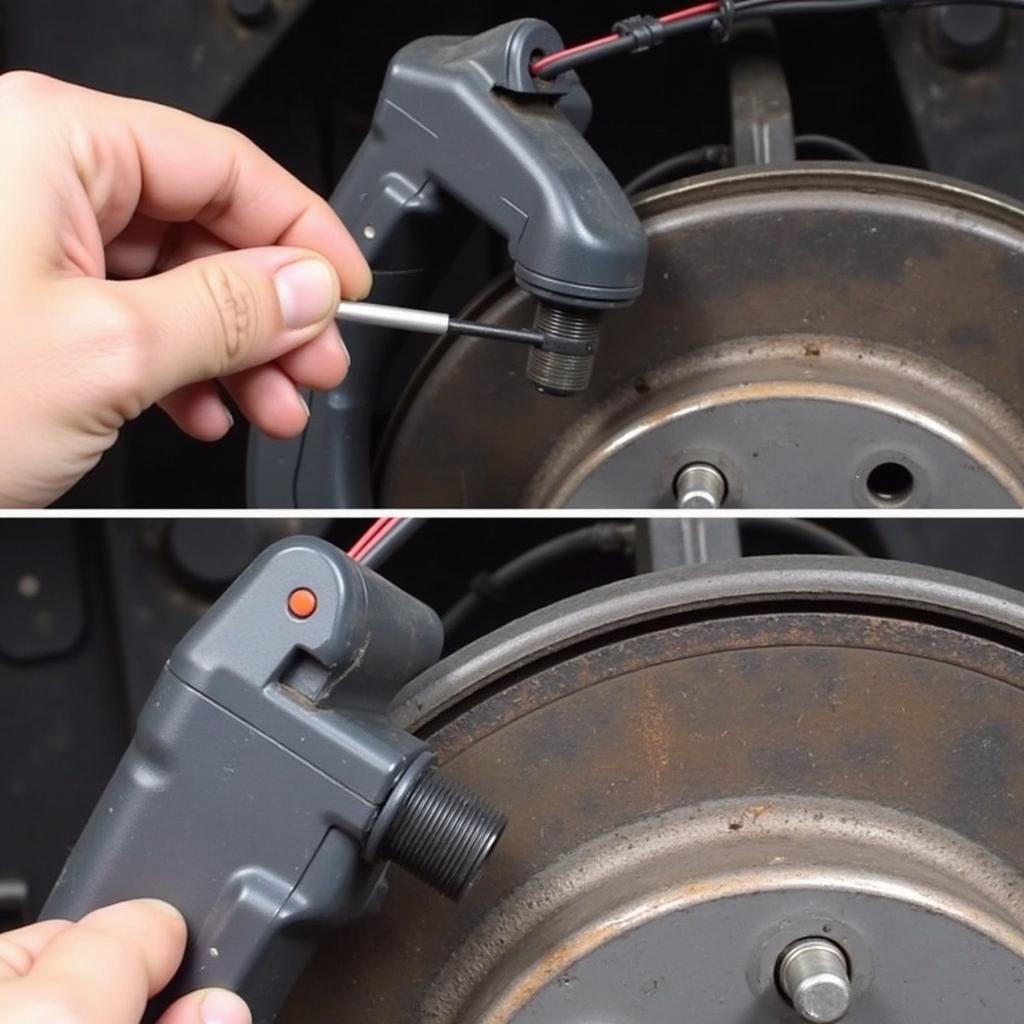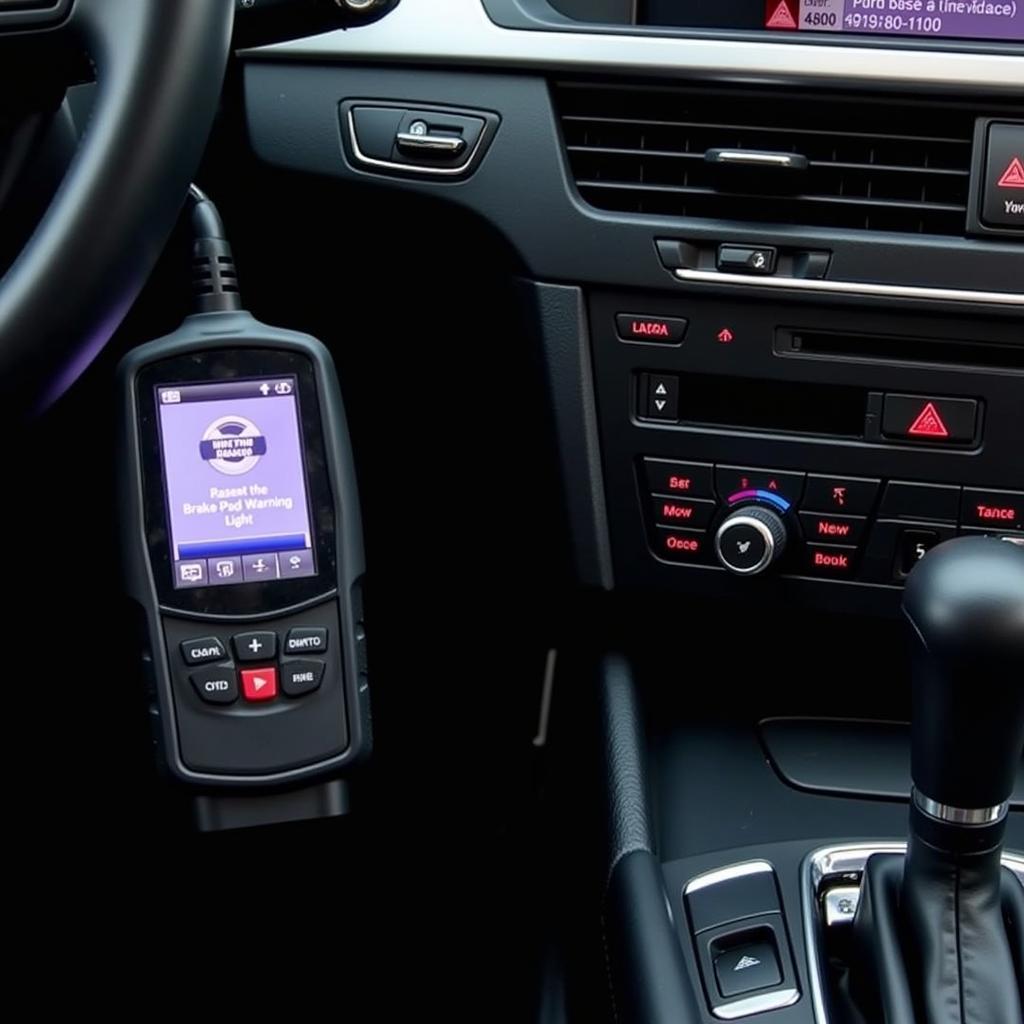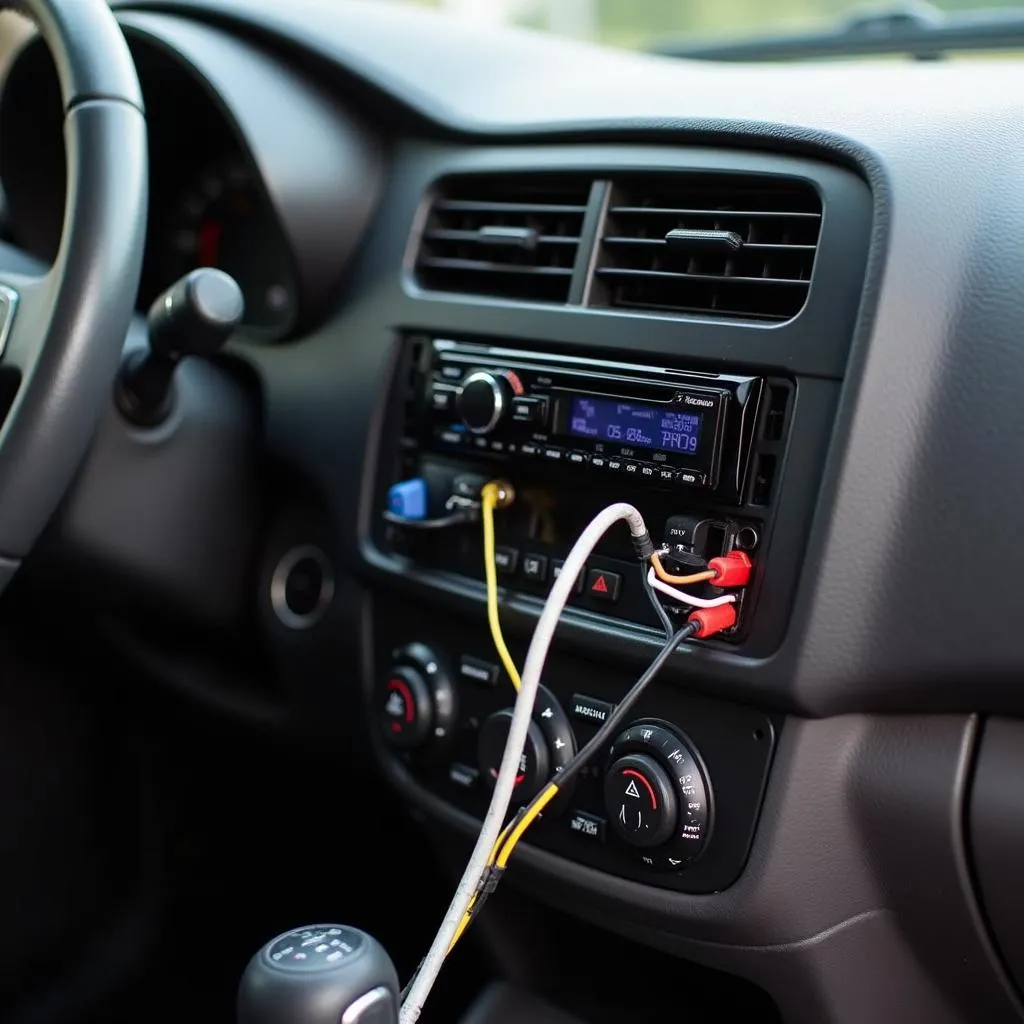The brake pad warning light on your Audi A6 dashboard is a crucial safety feature. When illuminated, it signals that your brake pads have worn down to a point requiring replacement. Ignoring this warning can lead to reduced braking efficiency and potentially dangerous driving conditions. This article provides a comprehensive guide to understanding, diagnosing, and resetting the brake pad warning light on your Audi A6.
Understanding the Audi A6 Brake Pad Warning Light System
The Audi A6, like most modern cars, employs a sensor-based system to monitor brake pad wear. This system comprises wear sensors embedded within the brake pads themselves. These sensors are essentially small wires that run through the pad material. As the brake pads wear down, the sensor wire eventually makes contact with the brake rotor. This contact completes an electrical circuit, triggering the brake pad warning light on your dashboard.
Common Reasons for the Brake Pad Warning Light to Illuminate
While worn brake pads are the most common culprit, several other factors can trigger the warning light in your Audi A6:
- Worn brake pad sensors: Sometimes, the sensors themselves can become damaged or worn out, causing a false warning.
- Damaged wiring: A short or break in the wiring harness connecting the sensors to the vehicle’s electrical system can also illuminate the warning light.
- Faulty brake pad sensor harness: In some cases, the connector or harness that links the sensor to the wiring loom might be damaged or corroded.
- Issues with the Instrument Cluster: Although rare, problems with the instrument cluster itself can result in a false warning light.
Steps to Reset the Audi A6 Brake Pad Warning Light
Important: Before attempting to reset the warning light, it’s crucial to ensure that the underlying issue triggering the warning has been addressed. If the brake pads are genuinely worn, they must be replaced before resetting the light.
1. Replacing Worn Brake Pads
 Audi A6 Brake Pad Replacement
Audi A6 Brake Pad Replacement
This step involves removing the wheel, caliper, and old brake pads, and then installing new ones. This process requires some mechanical skill and the right tools. If you’re not comfortable performing this task yourself, it’s best to consult a qualified mechanic.
2. Inspecting the Brake Pad Wear Sensors
 Inspecting the Brake Pad Wear Sensor
Inspecting the Brake Pad Wear Sensor
Examine the sensors for any visible damage, such as cuts or fraying. If the insulation is damaged, or the wire is severed, the sensor needs replacement.
3. Checking the Wiring and Connections
Trace the wiring harness from the sensors back to where it connects to the vehicle’s electrical system. Look for any loose connections, corrosion, or damage to the wiring. Repair or replace any damaged components as needed.
4. Resetting the Warning Light Using a Diagnostic Tool
 Resetting Brake Pad Warning Light with Diagnostic Tool
Resetting Brake Pad Warning Light with Diagnostic Tool
Modern Audi A6 models often require a specialized diagnostic tool to reset the brake pad warning light after the underlying issue has been resolved. These tools can communicate with the vehicle’s computer system to clear the warning message.
Note: If you’re uncomfortable working with car electronics, it’s best to leave this step to a professional.
Tips to Prolong the Life of Your Brake Pads
- Avoid hard braking: Sudden and frequent hard braking generates excessive heat, accelerating wear and tear on your brake pads.
- Coast to a stop: When approaching a stop sign or red light, take your foot off the accelerator pedal early and allow the vehicle to coast to a gradual stop.
- Maintain a safe following distance: This allows more time to react and reduces the need for sudden braking.
- Lighten your load: Carrying excessive weight in your Audi A6 puts additional strain on the braking system, leading to faster brake pad wear.
- Schedule regular brake inspections: As a rule of thumb, it’s a good idea to have your brakes inspected by a qualified mechanic at least once a year, or more frequently if you drive in demanding conditions.
Conclusion
Addressing the brake pad warning light on your Audi A6 promptly ensures your safety and the longevity of your vehicle’s braking system. By understanding the system, common causes, and solutions, you can confidently maintain your car’s braking system and enjoy a safe and controlled driving experience. Remember, if you encounter any difficulties or are unsure about any step, it’s always best to consult a qualified mechanic for professional assistance.

